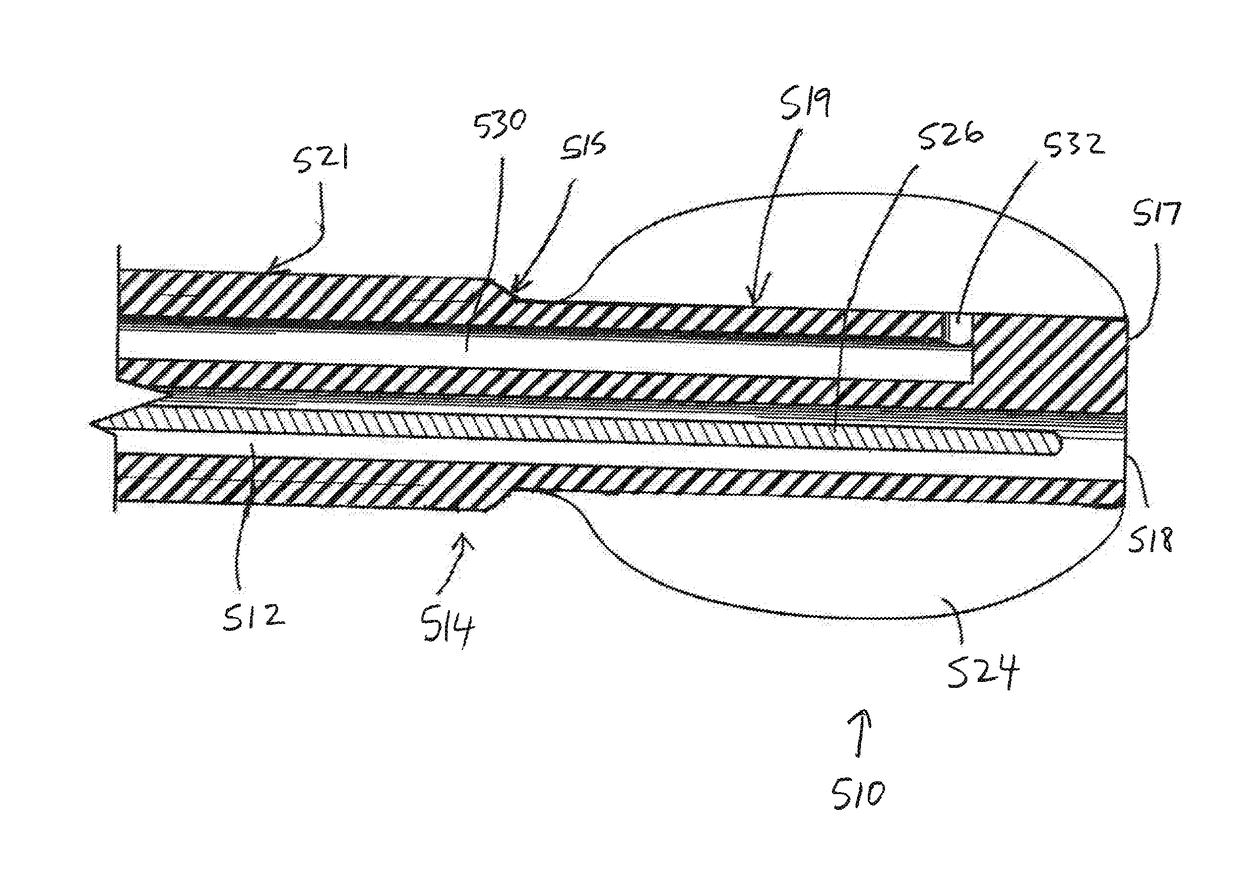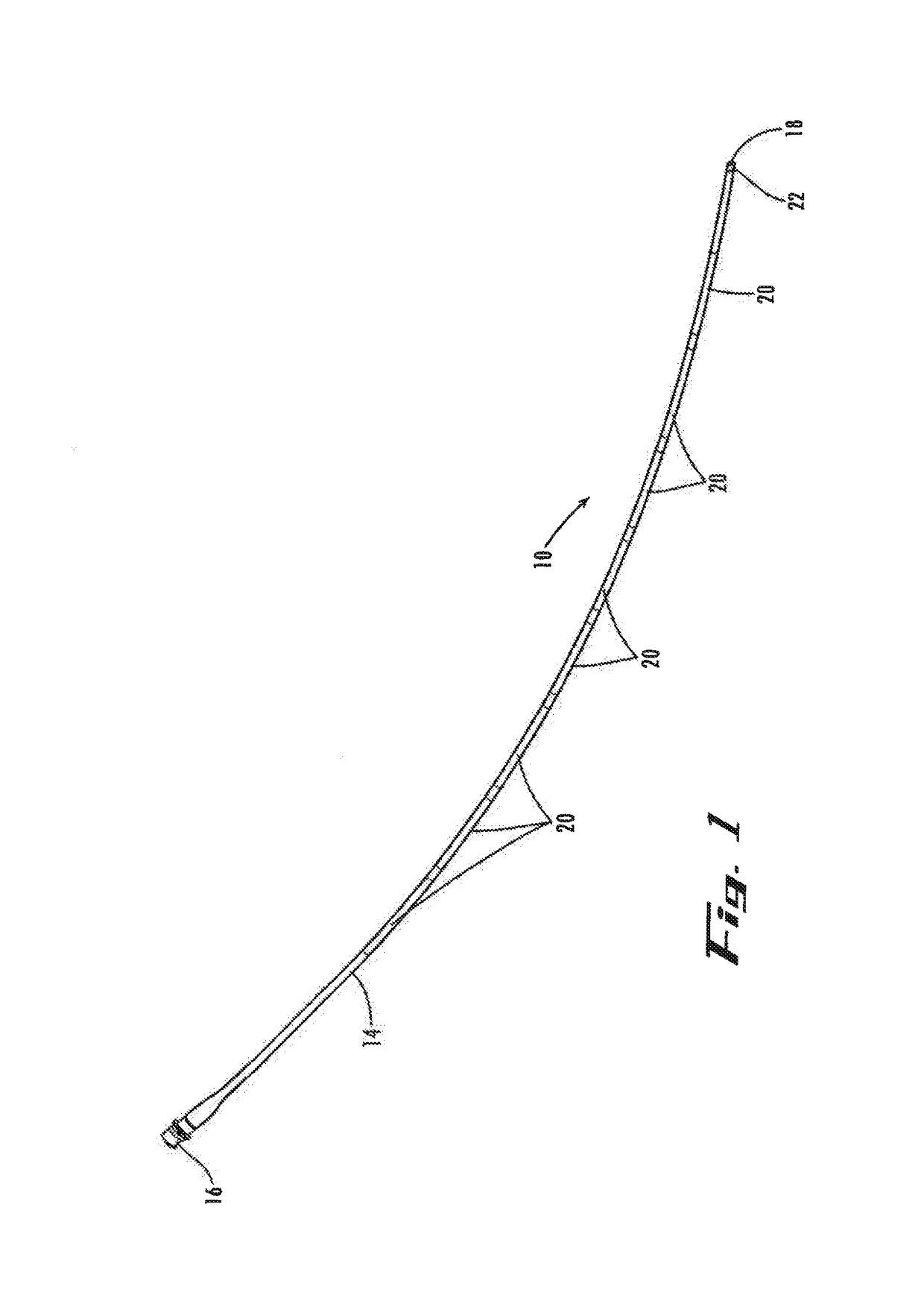Spinal catheter having multiple obstruction-clearing features
a technology of a spinal catheter and a feature, applied in the field of spinal catheters, can solve the problems of increasing the risk of injuring the spinal cord of the patient, difficult accurate placement of known contacts,
- Summary
- Abstract
- Description
- Claims
- Application Information
AI Technical Summary
Benefits of technology
Problems solved by technology
Method used
Image
Examples
second embodiment
[0060]Next, the practitioner advances the stimulator lead 410 (as indicated by the directional arrow) further into epidural space 6 until the insertion section 419a of the distal-end portion 419 of the stimulator lead 410, or at least the balloon 424 mounted to it (or extending axially from it, as in the second embodiment), are positioned within the pilot opening 7a (FIG. 12). Then, the practitioner directs delivery of the second fluid 431 from the second fluid source through the second lumen 430 to expand and contract the balloon 424 for further displacement of the tissue obstruction 8. For example, the practitioner can operate controls (e.g., valving) of the second fluid source (not shown) to control pressurized flow of the second fluid 431 through the second lumen and out of the second outlet with sufficient pressure to inflate the balloon radially outward relative to the distal-end portion of the stimulator-lead shaft until the pilot opening is expanded (FIGS. 13-14). Once the p...
fourth embodiment
[0067]In this embodiment, however, there are no electrical-stimulation contacts for delivering therapeutic energy. As such, the contact portion of the spinal cord stimulator lead 310 of the fourth embodiment is in this embodiment referred to simply as the main extension or elongation portion 521, as it has no contacts on it.
[0068]The distal-end portion 519 of the shaft 514 has a smaller diameter than the main portion 521 of the shaft and as such defines a leading insertion section of the shaft. This enables the distal-end portion 519 (and the distensible balloon 524 mounted onto it) to fit into small-diameter partial / pilot openings pressure-ablated in the tissue obstructions by the first pressurized fluid (or naturally occurring without the need for the first-fluid pressure-ablation). Typically the shaft 514 includes a transition portion 515 that is tapered (e.g., smoothly radially increasing in the proximal direction, as depicted) between the smaller-diameter distal-end portion 519...
PUM
| Property | Measurement | Unit |
|---|---|---|
| volume | aaaaa | aaaaa |
| size | aaaaa | aaaaa |
| angle | aaaaa | aaaaa |
Abstract
Description
Claims
Application Information
 Login to View More
Login to View More - R&D
- Intellectual Property
- Life Sciences
- Materials
- Tech Scout
- Unparalleled Data Quality
- Higher Quality Content
- 60% Fewer Hallucinations
Browse by: Latest US Patents, China's latest patents, Technical Efficacy Thesaurus, Application Domain, Technology Topic, Popular Technical Reports.
© 2025 PatSnap. All rights reserved.Legal|Privacy policy|Modern Slavery Act Transparency Statement|Sitemap|About US| Contact US: help@patsnap.com



